Why not give in to your dreams of the Middle East and leave for the land of the Bedouins – a land of mountains, canyons, and desert ? The land of incense and Sinbad the sailor, the Sultanate of Oman is located on the south-eastern corner of the Arabian Peninsula in western Asia. The country borders the United Arab Emirates to the northwest, Saudi Arabia to the west, and Yemen to the southwest and lies at the mouth of the Persian Gulf opposite Iran and Pakistan. It is a little-known country that has remained aloof from the dazzling development of some states in the Persian Gulf, but the Sultanate of Oman offers a great escape. If the United Arab Emiratesor Qatar have favored mass tourism, real estate gigantism, and hotel frenzy, the Sultanate of Oman has opted for a more intimate tourism that respects traditional customs and protects nature. Its capital and largest city is Muscat with a population of over 1.3 million, a city of human proportions. Muscat has been an important port on the Arabian Sea for two thousand years. It appears on Ptolemy’s Map of Arabia from the first century C.E. as Cryptus Portus (« the hidden port »). As a port, Muscat has not only encouraged trade but also combined different cultures, civilizations, and ideas. In Muscat, you will look in vain for the huge skyscrapers of the Gulf States. Muscatis a horizontal city where our gaze can easily wander to the surrounding mountains or the sea. If you enjoy seaside parks, the heady perfumes of the souks, or grandiose buildings, it will be difficult for you not to succumb to the charm of Muscat, an anti-Dubai capital that has managed to preserve its traditions and authenticity.
The Great Mosque of Sultan Qaboos: an architectural jewel
The Sultan Qaboos Great Mosque lies in the heart of Muscat in the district of Bawshar. Its construction started in 1995, and it was inaugurated six years later in May 2001. Its disproportionate size is proportionate to the investment made. It is the largest and most important mosque in the country and was the largest mosque in the Gulf States until the inauguration in 2007 of the Sheikh Zayed Grand Mosque in Abu Dhabi. The Sultan Qaboos Great Mosque can accommodate 20,000 worshippers and is surrounded by stunning, well-kept flower gardens. The gardens, screening off the bustle and noise of the city, contain numerous Frangipani trees and are dotted with reflecting pools where birds come to enjoy the coolness and abundant water. The Common myna or Indian myna (Acridotheres tristis), readily recognizable by its brown-colored back and belly, black hooded head, and almond-shaped bare yellow patch around its eyes and down its beak, seems almost as cheerful as a finch…

The Sultan Qaboos Great Mosque is built on an estimated area of 4,480,000 sq. ft. The Mosque itself covers an area of 430,000 sq. ft., the equivalent of six football fields. The size of the Mosque astounds, but also its architectural diversity which gives every Muslim a sense of being at home, regardless of his or her geographical origin. Thus, one finds throughout elements of Omani, Indian, Iranian, and Mongolian, Turkish, or Moroccan architecture.
« The virtuosity of Islamic art presents an infinite number of expressions through drawing, regardless its of origin or time. There were no boundaries in Islamic art and architecture ».
(Contemplation on the Islamic Theme – explanatory panel)
Square in shape, the Great Mosque is marked by five minarets echoing the five pillars of Islam. Four of the minarets, each 148 feet (45 meters) high, mark the four corners and the fifth, 300 feet (91.5 meters) high, the main entrance in the center of one of the sides. The center of the mosque is under a vast, golden dome. Ancillary buildings house spaces for ablutions and a library that contains 20,000 reference books on science, Islamic culture, and the humanities.
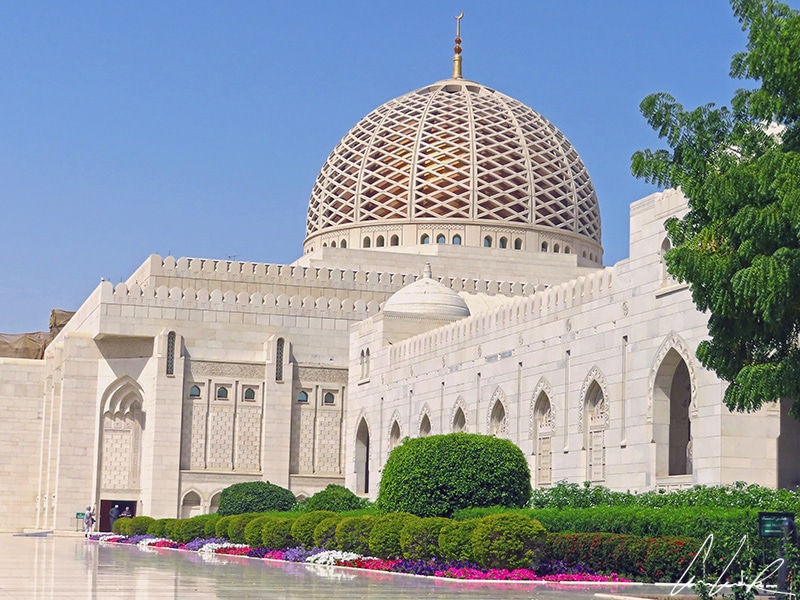
The central building is surrounded to the north and south by arcades, the « arwiqas » (plural of « riwaq »). The length of the North and South arcades is about 787 feet each (240 meters.) They are divided into twelve different halls, each containing mosaic decorationsrepresenting a different type of traditional Islamic culture. Hence the mosaics honor the decorative traditions of Egyptian art, Mamluk art, Mughal art, Ottoman art, North African art, and Timurid art, to name just a few. The upper part of the internal courtyard is a frieze inscribed with verses from the Koran. These holy verses appear in 1-inch (2 centimeters) letters carved into the stone, so they will last forever, God willing of course ! Islamic ornaments decorate the frames of the arcades. There are also numerous arches or « iwâns »,which generally function in groups of four. These are characteristic of Sassanid (Persian style) architecture. Those arches are reflected on the marble floor of the inner « sahn » (courtyard), a marble so smooth that it gives the illusion of a water mirror.
The Sultan Qaboos Great Mosque: the main mossalla
After putting our shoes in a small locker, we enter the main mosalla (men’s prayer room), which can accommodate 6,500 worshipers. Smaller in size, the women’s mosalla accommodates only 750. Islam is the main religion in the Sultanate of Oman. However, most Omanis follow the Ibadi, Ibadism, or Ibāḍiyy school of Islam. The Ibadi movement represents less than 1% of Muslims in the world, but all movements of Islam are represented in the mosque, including Sunni and Shiite. The Ibadi professes a peaceful, kind, and tolerant Islam. There are no jihadists or kamikazes of Omani origin. Indeed, to obtain salvation, one must practice a life marked by loyalty and work. One cannot redeem oneself by leaving for jihad and becoming a martyr. The Sultanate of Oman, where Sunnis, Shiites, and Ibadites live together, is therefore an oasis of religious coexistence. Moreover, respect for other faiths is enshrined in the Constitution adopted by the Sultanate in 1996.
« I have always strenuously supported the right of every man to his own opinion, however different that opinion might be to mine. He who denies to another this right makes a slave of himself to his present opinion because he precludes himself the right of changing it ».
(Thomas Paine – The Age of Reason, 1793)
The Men’s Prayer Hall is made of marble and features thirty-four Austrian chandeliers made of Swarovski crystal, which provide the enormous hall with harmonious lighting. The 35th chandelier is the most imposing of all. It is suspended from the 165 feet high central dome, a dome ornate with « muqarnas », a honeycomb-shaped decorative element representative of Islamic architecture. The chandelier, made of 24-carat gold, is 26 feet in diameter. It is 46 feet tall, weighs eight tons, and includes 600,000 crystals and 1122 halogen bulbs. It was the world’s largest chandelier, before the construction of the Sheikh Zayed Mosque in Abu Dhabi of course. The soft light that filters through the stained glass windows also contributes to the splendor of the place. The stained-glass windows were designed in France and made according to traditional techniques, i.e., with antique glass, lead setting, and patterns engraved and painted and then vitrified in the kiln.
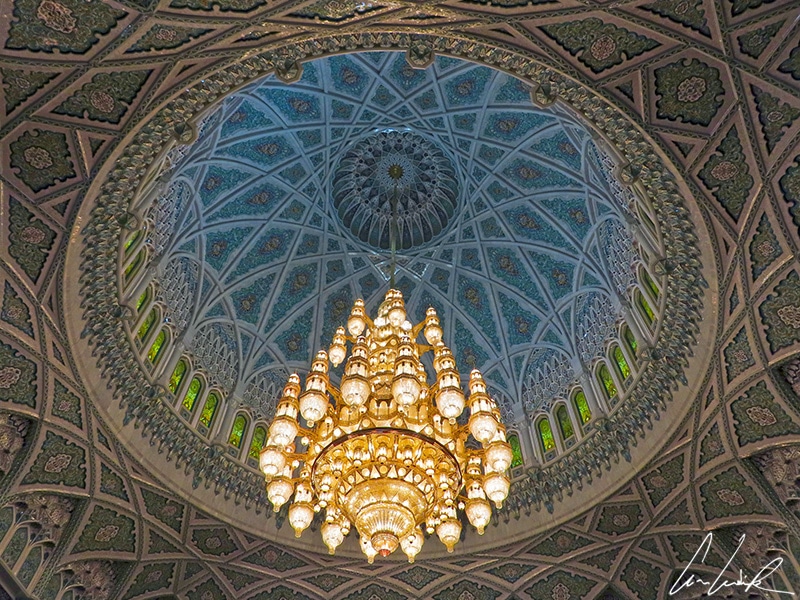
Le bois des plafonds est du teck de Birmanie. Le sol en marbre d’Italie est recouvert d’un tapis persan fabriqué en Iran, une pièce unique qui couvre une surface de 4 200 m² (60 x 70 mètres). C’est le deuxième plus grand tapis en une seule pièce au monde (encore une fois après celui d’Abu Dhabi !). Les fils de laine et de coton sont déclinés en 28 couleurs dont la plupart ont été obtenues à partir de teintures végétales. Le tapis pèse 21 tonnes et se compose de 1,7 milliards de nœuds. Ce travail titanesque a été effectué par 600 tisserandes de la province iranienne de Khorassan qui ont travaillé pendant quatre longues années. Ce tapis rassemble les traditions classiques du design persan Tabriz, Kashan et Ispahan.
The Royal Opera House of Muscat: Luxury at the service of music
Along with the Sultan Qaboos Great Mosque, the Royal Opera House of Muscat is another must-see building. Moreover, its slogan attracts travelers like us:
« The place where the extraordinary is reality »
The Royal Opera House Muscat (ROHM) is located in the most expensive residential area of the Shati Al-Qurm district, also known as Muscat’s Diplomatic district, on Sultan Qaboos Street. Carillion Alawi, the contractor for the Great Mosque, built the ROHM. The ROHMis the vision of his Majesty Sultan Qaboos Bin Said. Its design reflects unique contemporary Omani architecture. The house seats 1,100 opera lovers. It was inaugurated in 2011 with a production of Giacomo Puccini’s Turandot, directed by Franco Zeffireli and conducted by star tenor Placido Domingo. This opera house claims to be the first on the Arabian Peninsula and the second in the Middle East after the Cairo Opera House in Egypt. However, this was a close call, as the honor would have gone to Dubai (but what was Abu Dhabi doing ?) if the 2008 real estate crisis had not delayed the projected house in Dubai entrusted to the Iraqi architect Zaha Hadid. It was only in 2016 that the Dubai Opera House, in the shape of a traditional boat, was inaugurated with great pomp and circumstance with, yet again, the Spanish tenor Placido Domingo. Will the Placido Domingo music wave submerge the all Arab Gulf States ?

Muscat’s opera is not a mirage, and yet… The exterior facades are of a discreet, sparkling white marble, and Carrara marble covers all floors. The building resembles a palace surrounded by green gardens and fountains. With its eight stories (3 of which are underground), its architecture is strongly inspired by Omani fortresses. Here again, the music lover Sultan Qaboos Ibn Said did not skimp on the resources. The ROHM extends over 270,000 sq. ft. (25,000 m²) the equivalent of more than three football fields of an eight-hectare plot of land, six hectares of which are occupied by trees, ponds, and green spaces, offering space for walking and resting. Italian marble, Burmese teak, Swarovski crystal, all the noblest materials, have been brought together to build this building combining local Islamic architecture with the principles of an Italian-style theatre. The interior incorporates many traditional Islamic elements, all hand-finished: sequenced Islamic arches; wooden mashrabiya balcony screens; zouaq hand-painted decorations on wooden surfaces including the ceiling; chemsiana plasterwork, which involves carving openings in plaster to let light through, and hand-woven Iranian carpets in the reception rooms. Omani craftsmen completed the majority of the work
« The organ is in truth the grandest, the most daring, the most magnificent of all instruments invented by human genius. It is a whole orchestra in itself. It can express anything in response to a skilled touch ».
(Honoré de Balzac – The Duchesse de Langeais, 1834)
The magnificent pipe organ is the highlight of this extraordinary place. The Royal Opera House Muscat is also the only opera house in the world to have a German organ built by Philipp Klais. It weighs 50 tons, has four manuals, 70 stops, and 4,542 pipes measuring between 2 inches and over 30 feet in height.

With its internationally renowned programming, the Royal Opera of Muscat is ready to compete with Opéra Garnier in Paris or La Scala in Milan. To take care of the programming, Sultan Qaboos Ibn Said hired Umberto Fanni, formerly Artistic Director of the Arena of Verona, in Italy. Fanni tapped into his address book to attract the world’s most famous stars and orchestras. Thus the opera house has welcomed Placido Domingo, Michel Legrand, Maurizio Pollini, Jonas Kaufmann, and the Vienna State Opera Orchestra. The program also includes Omani and Arabic music concerts to attract local audiences. In 2020, the first opera created in the Arab world, « Sinbad the Sailor » should be produced in a co-production with the Budapest Opera.
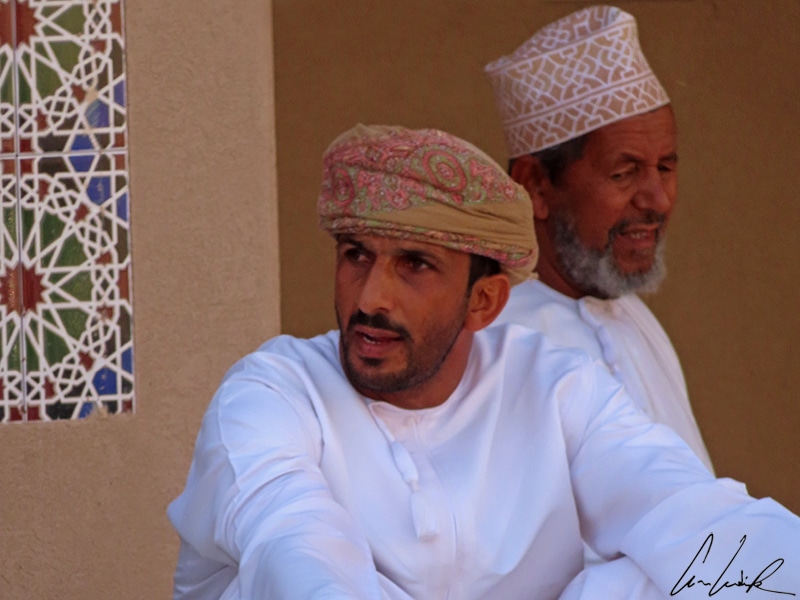
When it comes to chic evenings at the opera, we don’t mess around with a « dress code ». Traditional Omani dress is required for locals over the age of 12. Men must wear the « dishdasha », a traditional ankle-length and loose-fitting white thobe, also called a Qamīṣ, and a « Mussar », the local colorful and knotted turban. For gala evenings, this outfit can even be complemented by a « hezam » (silver belt) and « khandjar », the frightening curved dagger. Omani women wear the traditional black « abaya », a loose and straightforward robe-like dress, and most also wear the « hijab », a veil covering the head and chest. Those who do not respect this dress code are sent home or are asked to put on traditional clothing that is loaned to the distracted or to subversive rule-breakers. For Westerners, the dress code is formal or business-like garments for men and conservative dresses below the knee for women. The dress code policy applies to all events at the ROHM. In other words, bare shoulders, jeans, and sports shoes are totally forbidden !
Get lost in the souk of Mutrah
The corniche of Mutrah is another must-see corner of Muscat. Facing the imposing yachts of the sultan, the Mutrah Corniche is home to one of the oldest souks on the Arabian Peninsula. In the French language, the pejorative expression « mettre le souk » (make a mess) comes from the Arabic « suq » (a covered market).
« What a souk ? / What a circus ? / Winter is hot, summer is cold, / There is no more climate »
(Louis Chedid – Qu’est-ce que c’est que ce souk ?)
Finally, the French language has numerous expressions that, unbeknownst to almost all French, come from Arabic. French, over the centuries, has incorporated many foreign words and, therefore, also some from Arabic… The lexicographer Jean Pruvot wrote that the Arabic language comes in third place among the languages from which French has borrowed the most, just after English and Italian… So, we feel a chouïa (which comes from the Arabic saysan meaning « little by little ») less mindless, don’t we ? Apart from this souk story, my favorite is probably « So he’s really a brêle ! » to describe a stupid and often incompetent person. Do you know where this expression, often used nowadays in football to designate players with two left feet, comes from ? Well, it comes from the classical Arabic « baghl », which means a mule.
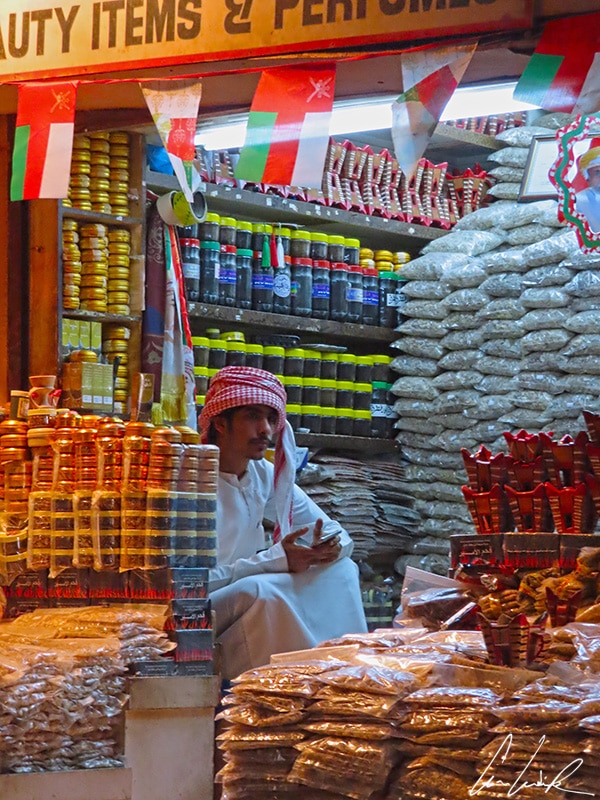
After this intellectual digression, let’s go back to the souk of Mutrah. The small alleys are impregnated with the perfumes of incense and sandalwood. Some stalls are full of amusing and useless trinkets reminiscent of Ali Baba’s cave: a camel with a hump that lights up, an alarm clock in the shape of a mosque, or even a « kumma » or a « khandjar » made in China! As we navigate through this absorbing labyrinth of narrow alleyways, we pass a fascinating series of small alleys stuffed with gold and silver. In essence, jewels are sold here by weight. People come here to personalize earrings, necklaces, or pendants. And the golden rule: everything is discussed and bargained for !
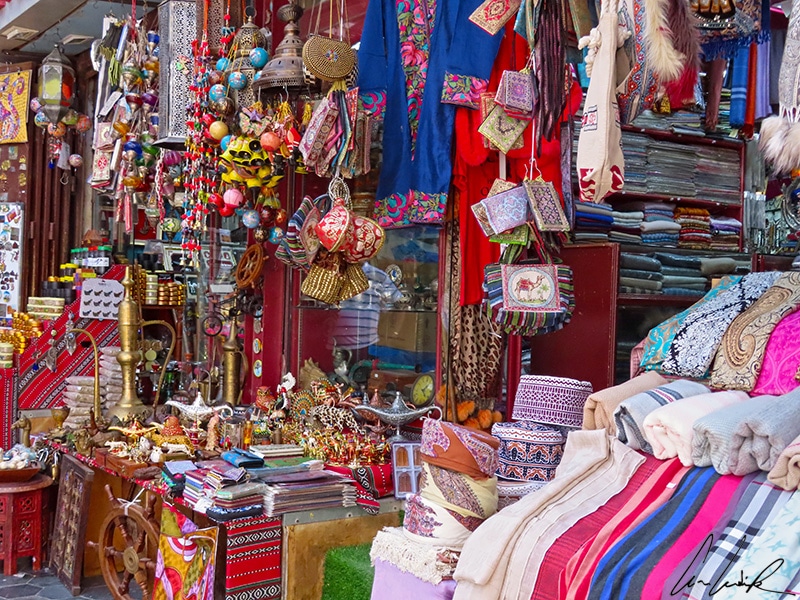
Strolling through the marvelous narrow alleys of the Souk of Mutrah is a unique experience. You turn right and then left thinking you’re in the incense area, and you find yourself in an alley of sandals… It’s no fun ! But getting lost in this maze of matchbox-like shops is almost inevitable. That’s it: the smell of incense is tickling my nostrils. Have I regained my sense of smell ? The stalls are filled from floor to ceiling with bags or boxes of incense stones in superb colors that vary according to their quality: red, green, white, yellow… Next to the incense stones, earth or copper burners are on sale at all prices. No wonder. Incense (« lubān » in Arabic) is the Sultanate’s flagship product. Its inhabitants make daily use of it. The term « incense », from the Latin incendere (to burn), commonly refers to woods, plants, and gums that give off a pleasant scent when burned. But pure incense or olibanum, is a resinous dried sap extracted from trees of the Boswellia genus. Oil from these trees is also commonly called frankincense in the Western world. The geographic distribution of these trees is between the Horn of Africa (Sudan, Ethiopia, and Somalia), the Hadramaout region in Yemen, and Dhofar in the Sultanate of Oman. Although there are about twenty different Boswellia trees, the hujara or houjara, from the Boswellia sacra, also known as the frankincense or Olibanum tree, is the most precious and expensive incense in the world. It is even said to be the incense brought by the Three Magi to Christ.

Multicolored cotton veils, Indian cashmere, embroidered fabrics, « kumma », Aladdin’s lamps, and lots of cheap products from Asia have conquered the souk. If you are looking for the traditional long white tunic (the « dishdasha ») and the round embroidered hat (the « kumma »), you are in the wrong place. Almost all men, young and old, wear the elegant « kumma ». The confection of a kumma is refined and meticulous, and men choose the material and diameter with care. First, they select the headband, and then the hatmaker will sew the top according to the preferred patterns. As for the « dishdasha », they all look the same to you, don’t they ? Men from all cultures like to look elegant, but not all men are lucky enough to have a “dishdasha” in their wardrobe. A closer look reveals that often the embroidery around the collar has colors and patterns that match the « kumma ». Sometimes these colors and patterns are also found on the sleeves. And the little pompom on the right side called « tarboucha » ? What’s it for? Come on; I’ll tell you…. And yes, in this, the land of Love, the home of luxury perfumes ! If you go to the souk, it’s also to create your personal fragrance from rose oil, musk, amber, sandalwood, patchouli, etc. Every self-respecting Omani man wears his perfume on his « tarboucha » to spread a pleasant and unique fragrance behind him. Don’t say that passing an Omani smells good. He will be too pleased with himself…
Find more on the Sultanate of Oman
- The East Coast of the Sultanate of Oman: A Walk along the Coastline
- The Natural Wonders of Oman: Green Wādī and Moving Sand
- Escapes in the Hajar Mountain Range
- The Sultanate of Oman in the time of Castles

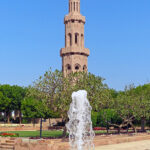

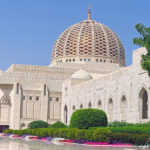
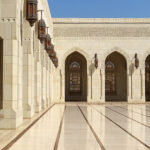
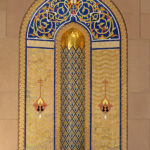


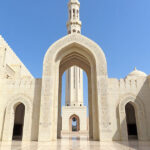
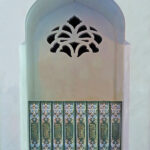










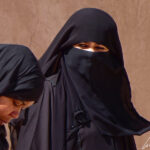
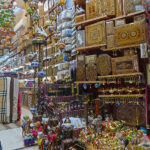



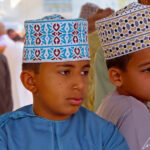
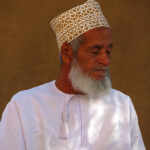


Thanks for sharing. Oman would never have been on my list of places to visit. However, I have a friend there who had been calling us for a visit and we went to see him. Turned out to be quite an interesting place to visit. All the architecture has remained traditional in sharp contrast with Dubai. The country has a rich history and culture. Large forts, castles and mosques, great festival at night in Muscat in February, beautiful Corniche and Souq in Muscat are places not to be missed.
Thank you for your comment Steve. Palm trees, mountains, seaside hangouts and friendly locals: Oman is lovely! Indeed, Muscat is much more laid back than nearby Dubai, and is without the legions of futuristic skyscrapers and fantastical man made islands that populate its flashier neighbors.